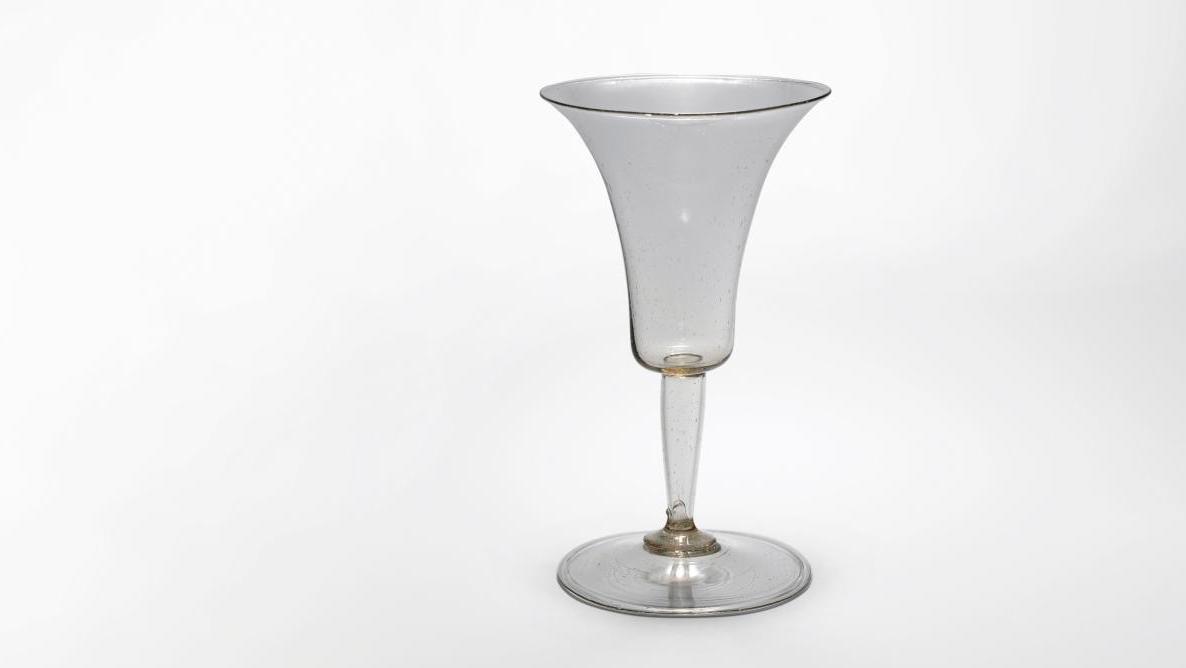The sieges of Constantinople in 1204 and 1453 spurred the growth of a thriving luxury glassware trade in Europe. The invention of cristallo—thin, translucent glass—made Venice famous.
Venice or in the Venetian style, late 16th century, "magelei" bowl with gilded rim and hollow baluster foot with molded gilt "ladder stem" decoration, h. 11 cm. (4,4 in), diam. 12.2 cm. (4,6 in). Drouot, October 13, 2020. Gros & Delettrez auction house (Ms Lhermitte-King).
Result: €37,700
From the 13th century, princes who collected precious objects became unhappy with the unreliability of the supply of rock crystal in Europe. So they set their sights on their glassmakers, whose promising work seemed the only means to equal rock crystal’s clarity, strength and luxurious finish. Against all odds, glassmaking bloomed in Venice, the city least conducive to its development. The lagoon had plenty of sand, of course, but its high iron content gave the glass a greenish hue unsuitable for this ambitious undertaking. Consequently, in the 14th-century glassmakers starting importing, at great expense, quartz pebbles from Ticino, which were then ground into a fine powder rich in silica: an indispensable ingredient for making glass paste. The binder was made of plant ash imported from Syria…
com.dsi.gazette.Article : 19926
This article is for subscribers only
You still have 85% left to read.
